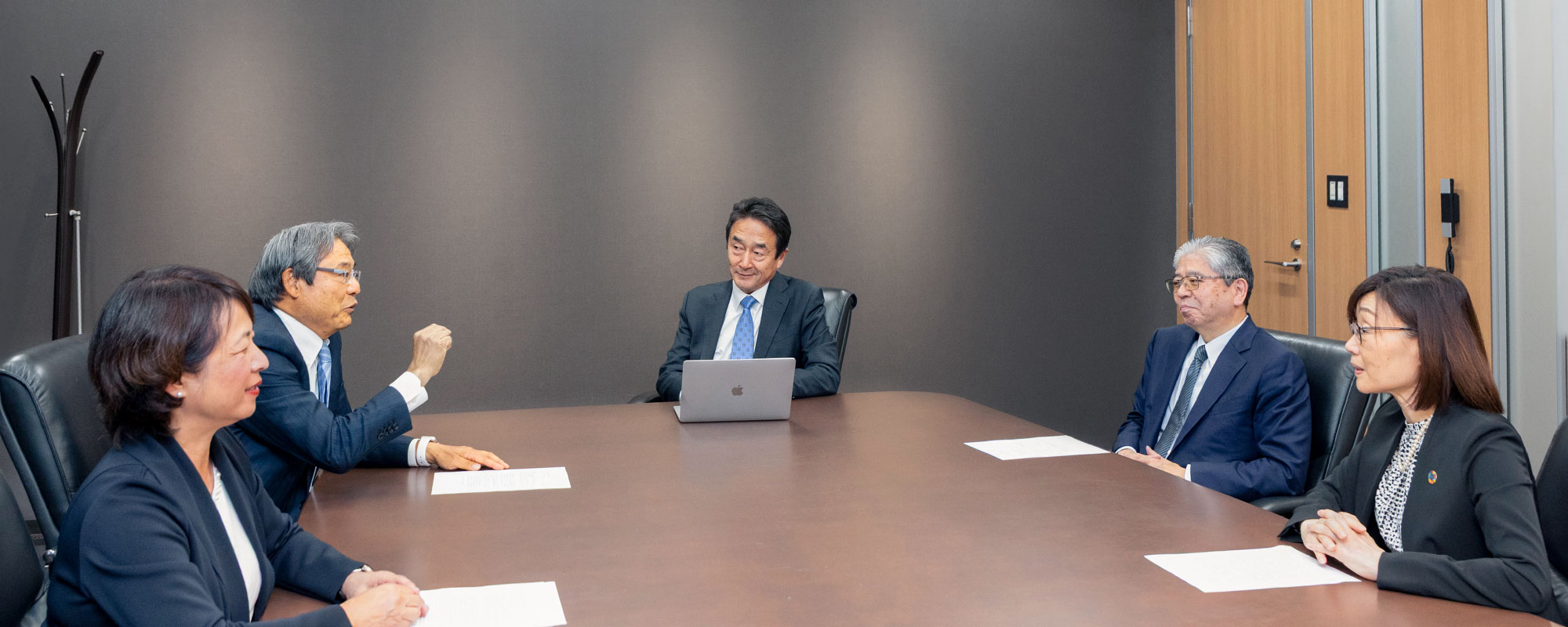
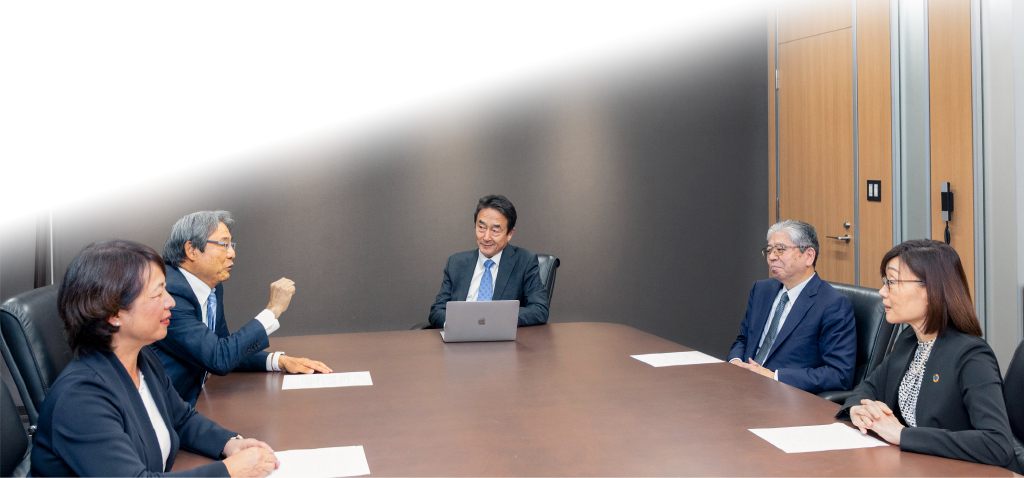
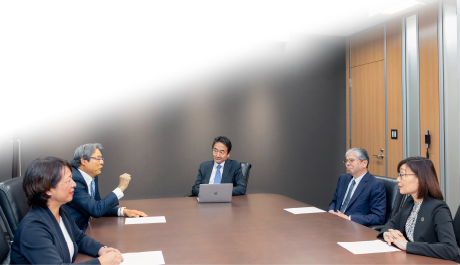
Special Feature: Roundtable Discussion with Independent Directors
Governance That Balances HOYA’s Unique Identity with Innovation
Hiroaki Yoshihara
Lead Independent Director
Chairperson of the Audit Committee, Member of the Nomination Committee, Member of the Compensation Committee, Member of the Healthcare Compliance Committee
Yasuyuki Abe
Independent Director
Chairperson of the Nomination Committee, Member of the Compensation Committee, Member of the Audit Committee, Member of the Healthcare Compliance Committee
Takayo Hasegawa
Independent Director
Member of the Nomination Committee, Member of the Compensation Committee, Member of the Audit Committee
Mika Nishimura
Independent Director
Chairperson of the Healthcare Compliance Committee, Member of the Nomination Committee, Member of the Compensation Committee, Member of the Audit Committee
Mototsugu Sato
Independent Director
Chairperson of the Compensation Committee, Member of the Nomination Committee, Member of the Audit Committee
Moderator : Thank you all for taking the time to join us today. In this roundtable discussion, we look forward to hearing your candid insights from the unique perspective of outside directors.
To begin with, HOYA’s Board of Directors functions primarily as a monitoring board. What are the key areas of focus typically addressed in Board discussions? For example, do you also share your views or offer advice on specific business strategies or M&A proposals? And what is the overall atmosphere of the boardroom?
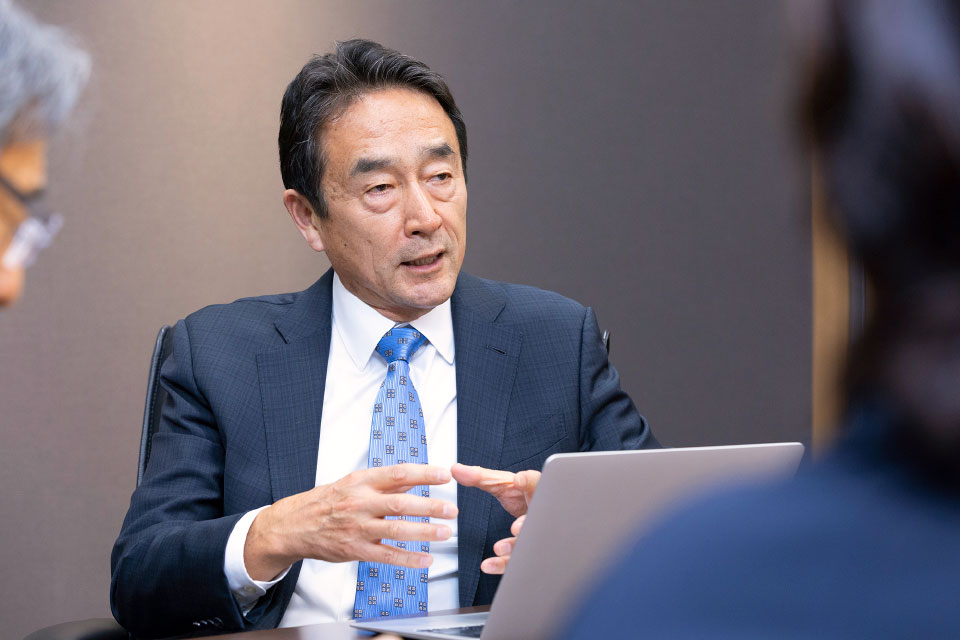
Yoshihara : All important matters are brought before the Board of Directors. While staying true to HOYA’s core philosophy of high profitability and investment efficiency, the Board engages in open and vigorous discussions. Even in the case of investment proposals such as M&A, if a proposal does not meet the Company’s decision-making criteria, we do not hesitate to voice strong opposition. One of the distinguishing features of HOYA’s Board, I believe, is that all members feel free to speak candidly. Another notable point is the openness of management—not only the CEO, but also the heads of each business devision demonstrate a clear willingness to share information with independent directors. I see this attitude as one of the foundations underpinning HOYA’s healthy corporate culture.
Moderator : In recent years, HOYA has not carried out any large-scale M&A transactions. What kinds of discussions take place at the Board level regarding M&A?
Yoshihara : One of HOYA’s strengths, in my view, is that proposals are often brought to the table quickly—even before being fully refined—so that everyone’s views can be heard and the strategy can be revisited as needed. I find this to be an extremely sound process.
In any company, there is always a risk that those responsible for a deal may craft optimistic projections to justify the proposed acquisition price. At HOYA, we thoroughly examine the basis for any figures presented, and scrutinize whether there is real alignment with HOYA’s core competencies, culture, and management philosophy. We never approve proposals simply by accepting the numbers at face value.
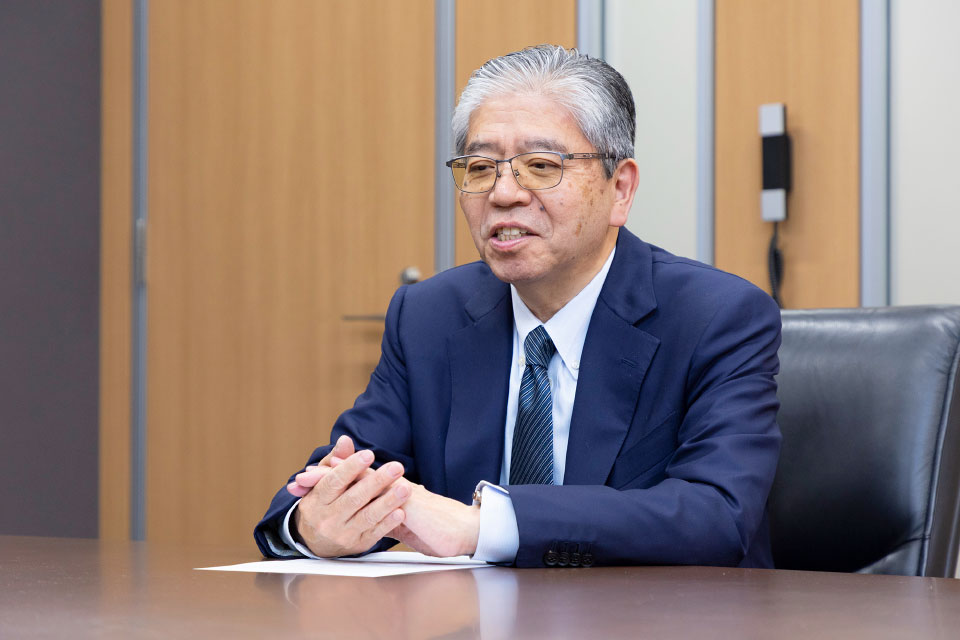
Sato : I evaluate M&A proposals from three main perspectives. The first is strategic relevance—specifically, prioritizing strategic fit and chemistry with HOYA’s existing businesses. The second is whether the valuation and pricing are appropriate. It is essential to critically evaluate the accuracy of the business plan, looking particularly at whether future projections may be overly optimistic. The third is post-merger integration, as it is essential to ensure that a well-developed integration plan and structure are in place to generate synergies after the acquisition. At a minimum, all three of these criteria must be met.

Hasegawa : HOYA’s existing businesses have high profit margins, which serve as the baseline for its investment criteria. Under the Company’s “big fish in a small pond” philosophy, HOYA places a strong emphasis on profitability, which in turn results in an extremely high internal hurdle rate for investment proposals. Because of this, we pay close attention to whether overly optimistic synergy projections are being used in order to clear that hurdle.
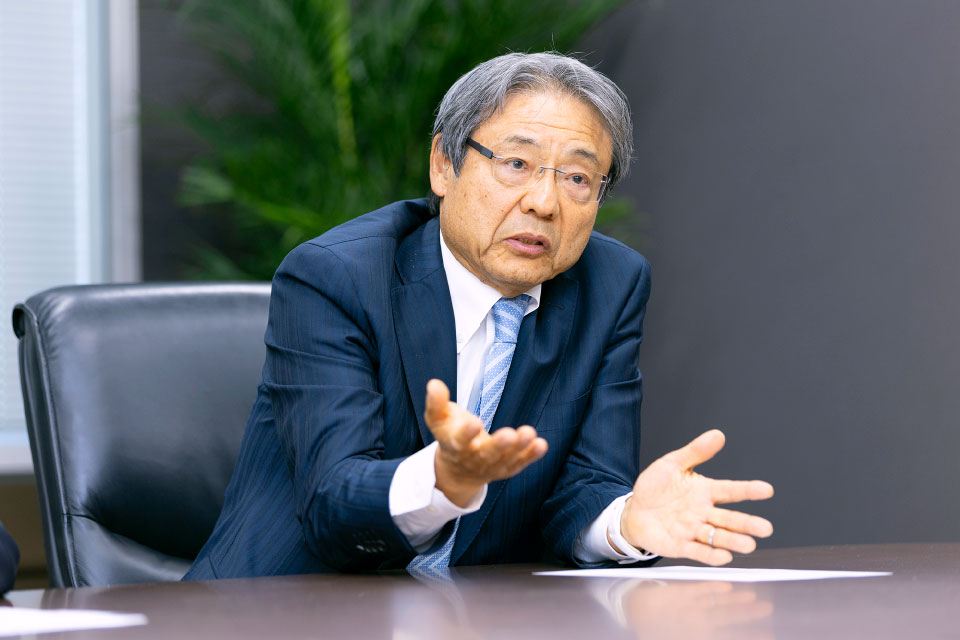
Abe : In observing the Company over time, I have come to feel that HOYA’s culture is quite unique. Whether an acquisition target aligns with that culture or not has a significant impact on the success or failure of the integration. For that reason, cultural compatibility is something I pay close attention to.
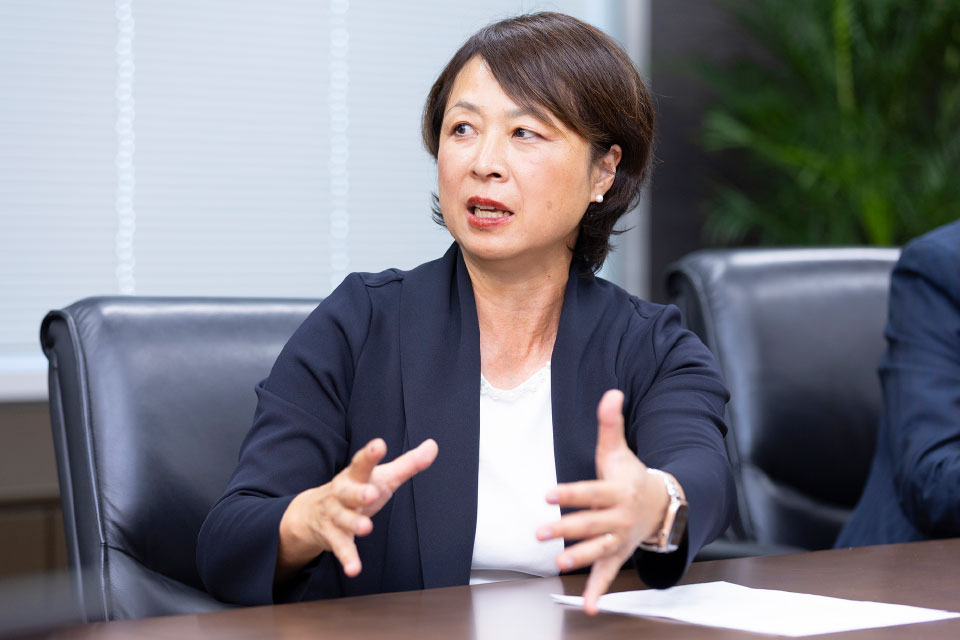
Nishimura : As Ms. Hasegawa mentioned, the internal hurdle rate for investments at HOYA is extremely high. For example, there is an expectation that M&A could be used to expand regional coverage or complement the product lineup, thereby enabling proposals to clear that hurdle. However, the reality is that such opportunities rarely arise.
Yoshihara : The Board will not approve an acquisition unless we are confident that leveraging HOYA’s core competencies—including advanced optical technology, precision processing, and mass production—and embedding our financial discipline within the acquired company will produce meaningful synergies within two to three years.
Sato : I sense that President Ikeda is firmly committed to establishing a new pillar of business. Rather than building something entirely from scratch, his approach appears to be centered on achieving this through M&A. However, as others have noted, the high internal hurdle rate and concerns about earnings dilution mean the Company is still in the process of identifying the right opportunity.
Moderator : Thank you. Let us shift gears slightly. As independent directors, what are the key points you each prioritize when preparing for Board meetings?
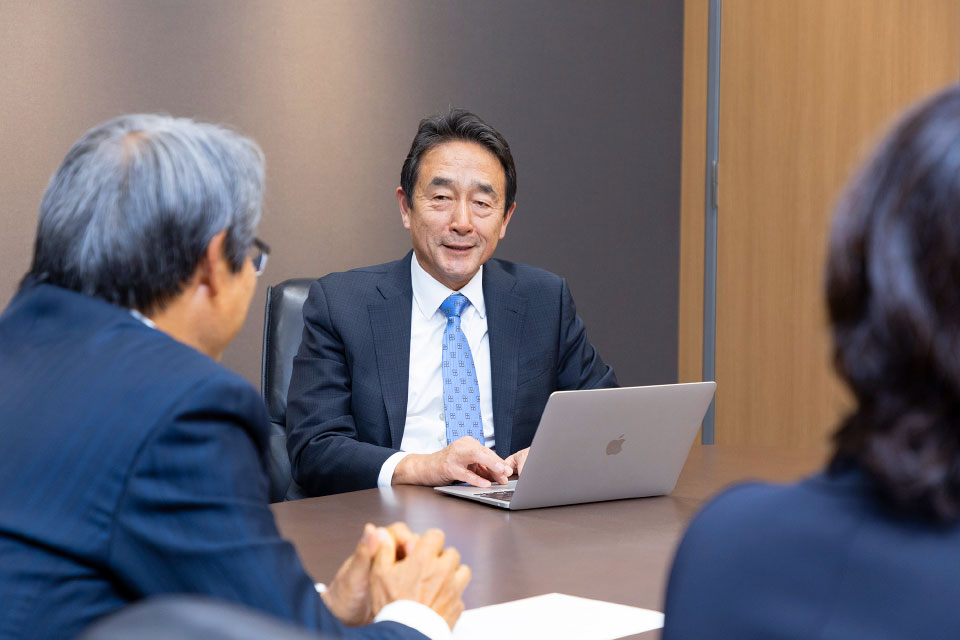
Yoshihara : HOYA has a clearly defined set of targets—namely, high profitability and capital efficiency—which serve as a benchmark for what the Company aims to be. As an independent director, I consider how I can contribute to achieving these goals. Ahead of each Board meeting, I prepare the key points I want to raise or advise on, so that I can build on them as the discussion unfolds on the day.
Abe : For HOYA’s Board of Directors, which functions primarily as a monitoring board, a key responsibility is to ensure that the executive side is carrying out its duties appropriately. That said, it is extremely difficult to make such judgments within the limited time of Board meetings. To help ensure objectivity in assessing whether sound decisions have been made, I try to review information outside the boardroom as much as possible.
Hasegawa : In that regard, the site visits that the Company regularly conducts—to domestic and overseas factories, R&D centers, and other locations—are extremely helpful. There is often a significant difference between what is in the documents and what is happening on the ground. Coming from a technical background myself, I find that seeing how operations actually run and who is managing them greatly deepens my understanding of the business.
Nishimura : At Board meetings, we typically only interact with those in “reporting roles,” such as business or administrative heads. But during site visits, we are able to engage directly with people on the ground. We can ask questions to frontline employees and assess whether their responses are consistent with what is being reported to the Board. These visits also offer a valuable opportunity to meet the next generation of leaders.
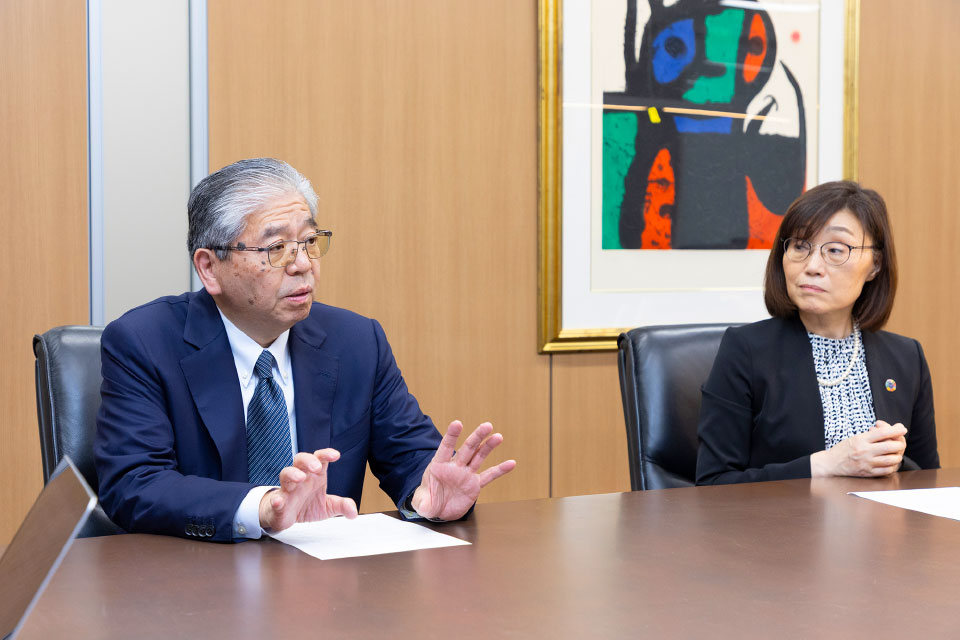
Sato : As an independent director, I am not involved in evaluating the merits of how each individual business is executed. Instead, I focus on whether the executive side is making decisions through an appropriate process and whether key issues are being properly discussed. I aim to support the Company from that perspective.
Moderator : Let us now turn to today’s main theme. From your perspective as independent directors, what do you see as the most pressing management challenge facing HOYA?
Yoshihara : I believe the most important challenge is creating new drivers that will support HOYA’s medium- to long-term growth. Since becoming CEO, Mr. Ikeda has taken a trial-and-error approach over the past three years, pursuing management improvements through various initiatives, such as introducing an internal company system. While M&A activity has continued, it has mainly involved bolt-on acquisitions that extend existing businesses. In that sense, the Company is carefully formulating its medium- to long-term growth strategy while ensuring near-term profitability. As for growth areas, much has already been said, but I believe HOYA should continue to pursue niche fields with strong growth potential—areas where we can apply our core competencies and expect meaningful synergies. This aligns with our philosophy of being a “big fish in a small pond.”
Sato : I believe the biggest management challenge is that HOYA’s high profitability has, in a sense, raised the hurdle for entering new businesses due to concerns over earnings dilution. At this stage, the Company is still searching for the optimal path to growth that also maintains strong profitability. This includes identifying white space adjacent to the Life Care and Information Technology businesses—or perhaps finding something that serves as a bridge between the two.
Abe : Looking back on HOYA’s history, the Company has grown by building on its processing technologies for materials such as glass and resin. Even now, there may be highly profitable adjacent areas that we have yet to fully recognize. At the same time, stepping into unrelated domains poses considerable risks and must be approached with caution.
Moderator : In the most recent questionnaire responses, some of you noted that HOYA’s medical-related businesses continue to face a challenging environment.
Yoshihara : Management is ultimately a matter of balancing the short term with the medium to long term. While it is essential to steadily pursue our medium- to long-term growth strategy, we must also provide firm support for underperforming businesses that require short-term turnaround efforts.
Abe : I agree. Revitalizing struggling businesses within the Life Care segment is a top management priority.
Hasegawa : I believe that reshaping the portfolio to enhance its overall resilience is a sound approach. However, divestitures and business exits alone are not sufficient. It’s also essential to create something new—whether organically or through M&A. This remains a challenging area for President Ikeda, but the key lies in determining where to place the strategic focus.
Moderator : What other management challenges do you see, beyond strengthening the business portfolio?
Nishimura : I see cross-functional issues within the Group—those that cut across the organization—as key management challenges. On the risk side, cybersecurity and compliance are growing threats globally. On the opportunity side, talent identification and management are increasingly critical. In terms of talent management, we are not only discussing CEO succession but also deepening our conversations with the CHRO on how to build a more diverse pipeline of next-generation leaders.
Hasegawa : In regard to human capital, I was genuinely surprised to learn that HOYA’s employee engagement score is in the high 70s—a figure rarely seen. It suggests to me that employees are highly motivated in their work, and I consider this a major strength of the Company. From what I have seen, the CHRO is working to raise engagement even further by conducting detailed issue analysis for each business division.
Moderator : Since risk management was raised earlier, I would like to touch on that topic. In March 2024, HOYA experienced an IT incident stemming from unauthorized access by a third party. How do you assess the Company’s approach to cybersecurity?
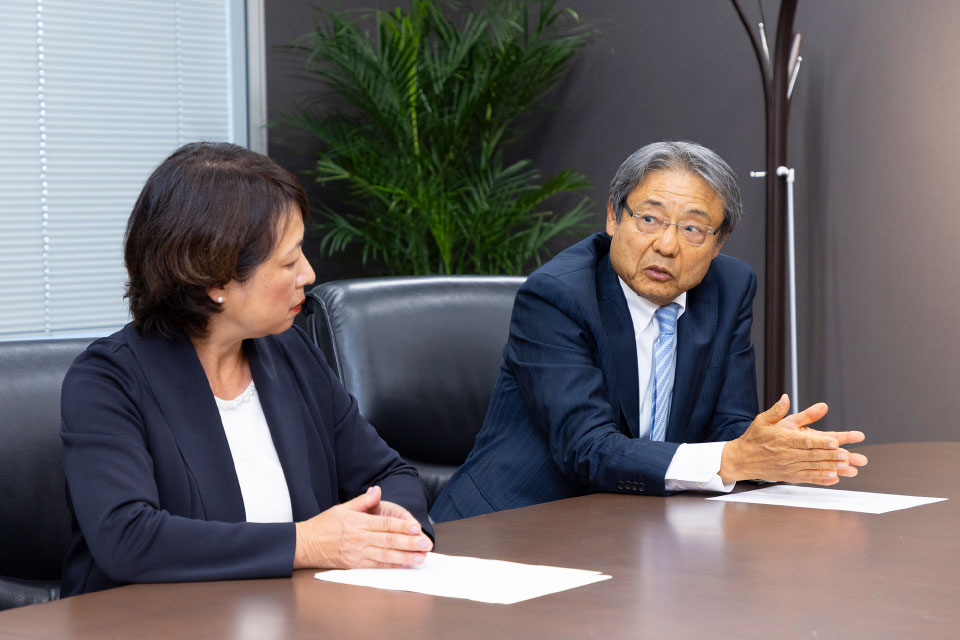
Abe : Fundamentally, IT incidents are something that should never happen. Although the impact of the recent case was limited, I must admit it was disappointing—especially considering there have been similar incidents in the past. That said, cybersecurity is a never-ending battle. There is no way to reduce the risk to zero, and no solution can provide absolute security. Even with enhanced security standards, it is essential to stay abreast of the latest technological developments and respond to emerging issues with vigilance.
Yoshihara : To prevent a recurrence of IT incidents, it is even more important than technical measures to cultivate a corporate culture in which readiness and resilience are second nature. With the appointment of new personnel and the introduction of new policies now underway, I hope this will serve as a catalyst for building an even stronger culture capable of effectively responding to cyber incidents.
Hasegawa : I completely agree. No matter how robust a security system may be, it is ineffective if frontline staff lack a proper sense of risk. Neglecting basics—such as software updates, virus scans, or proper management of IT equipment—can create small vulnerabilities that lead to major breaches. Ultimately, it comes down to how seriously each individual employee takes the issue.
Nishimura : As Mr. Abe noted, it is impossible to eliminate risk entirely. That is why it is critical for the Company to take a strategic approach to resource allocation—such as by clearly identifying its “crown jewels,” or the most vital information and data that must be safeguarded. I also hope to see further development of systems designed to contain the scope of impact in the event of a cyberattack.
Sato : While strong communication from the head office is important, it is equally vital for those on the ground to monitor potential risk points—including the oversight of local servers. In the physical world, a lapse may only affect the individual, but in cybersecurity, a single vulnerability can compromise the entire Group. That is why fostering greater awareness across the Company is essential.
Moderator : Thank you all very much. Today’s discussion has been extremely valuable. You not only highlighted HOYA’s strengths but also shared candid insights into the management challenges and risks that shareholders and investors should be aware of. It was particularly helpful to hear your perspectives on both the offensive and defensive aspects of these issues.
Further Strengthening of Cybersecurity Measures
In response to the IT incident caused by a cyberattack in March 2024, we have further reinforced our cybersecurity measures to enhance the protection of information assets and ensure business continuity. Specifically, we are implementing integrated, Companywide firewall management and conducting log monitoring using security software, with the aim of enabling early detection of vulnerabilities and enhancing our ability to respond.
In addition to these technical measures, we are working to visualize and continuously improve our integrated management framework, led by our head office’s IT department. These efforts aim to strengthen our ability to both prevent and respond to cyberattacks, while ensuring the continued reliability of our operational environment.